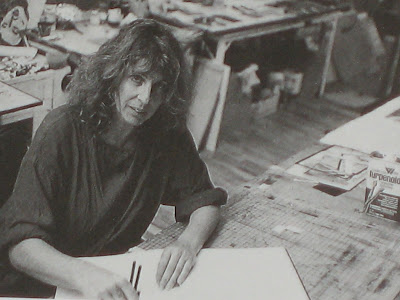 Keith (from Gimme Shelter), 2004
Keith (from Gimme Shelter), 2004 Lady with Ermine, 1489-90 (after Leonardo da Vinci), 2003
Lady with Ermine, 1489-90 (after Leonardo da Vinci), 2003 Flower Ben, 2002
Flower Ben, 2002 Sharon (Berlin), 1996
Sharon (Berlin), 1996 Marc Jacobs, 2004
Marc Jacobs, 2004 Liam, 1996
Liam, 1996Is it OK to make paintings from mass media photographs? Is it wrong? Illegal? Trashy? Looked down upon as not original? Elizabeth Peyton has made many paintings from Newsweek photos, Rolling Stone, newspapers, and art history books. She is a great figure and portrait artist capturing the essence-or what the public thinks is the essence. These are just a few of her paintings. She's painted several movie stars, rock stars, designers, royalty - not knowing any of them. She also has painted several of her friends.
She was born in 1965 in Danbury CT and now lives in NYC. She earned her BFA from the School of Visual Arts in NYC, 1984-87 and has been steadily exhibiting since 1988.
"Known for her intimate figurative portraits of youthful, romantic individuals, her work is intensely personal. They are stylish in a timeless way and are at moments in their lives when they stand for their own ideals of independence, beauty, and artistry. " (Matthew Higgs)






































